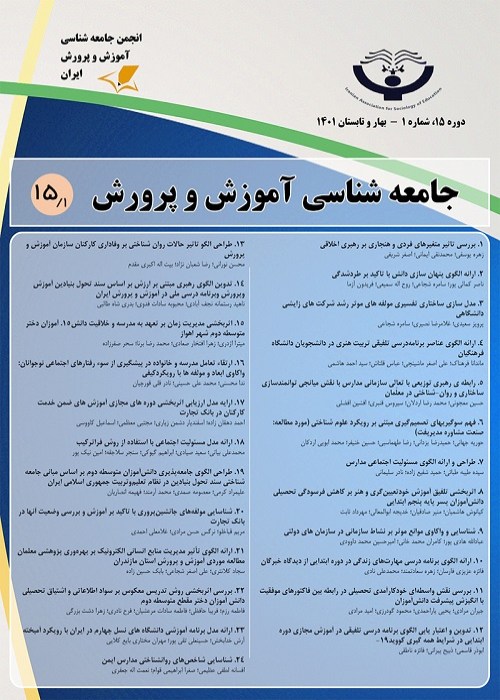An Ethnographic Study of School Culture and Organization Based on Schein’s Model: A Case Study of Two Primary Schools in Mashhad
The organizational culture of the school as a common set of values, beliefs, norms is defined an important platform for teaching and learning and an indicator of the level of quality and promotion of educational programs. The purpose of this study was to study the ethnographic organizational culture of the two primary schools in Mashhad based on Schein's model.
This study is applied in terms of purpose and ethnography in terms of research method. The population included two elementary schools for girls and boys in two districts with fewer and more privileges in the city of Mashhad. The study sample consisted of principals, deputies, teachers, and students who were selected by the purposive sampling method. In total, the number of participants was 15 people. Semi-participatory observation and semi-structured interviews were used to collect data. The validation of the research results was based on the four criteria of Lincoln and Guba. Data content analysis was performed using the coding method in three stages of open, axial, and selective coding.
The results showed the identification and extraction of 37 selective categories at three levels of behavioral patterns (18 selective codes), values and norms (12 selective codes), and fundamental assumptions and beliefs (7 selective codes) based on Schein's view. Out of 436 open codes, 227 open codes at the level of behavioral patterns, 121 open codes at the level of values and beliefs, and 88 open codes at the level of basic assumptions were identified. Out of a total of 88 central codes, 42 codes were extracted at the level of behavioral patterns, 29 codes at the level of values and norms, and 17 codes at the level of basic assumptions of organizational culture. Important features of organizational culture at the level of behavioral patterns can be poor social interaction between school members and inappropriate behavior of school staff with students and at the level of values and norms to cooperation, social empathy with parents and student motivation, and at the level of assumptions to cooperation. He mentioned the cooperation of parents and students in school affairs, students' discipline, school identity, monitoring and management of staff disciplinary behavior, and staff accountability.
Given the dominance of bureaucratic, formal and controlling organizational culture characteristics in the studied schools and the dichotomy between bureaucracy and participation in the three levels of organizational culture, it is necessary to pay special attention to the soft and multi-layered category of school organizational culture. Especially in the field of teaching and learning, in the educational policy-making and decision-making process at the local and national levels by educational policy makers, especially school principals.
- حق عضویت دریافتی صرف حمایت از نشریات عضو و نگهداری، تکمیل و توسعه مگیران میشود.
- پرداخت حق اشتراک و دانلود مقالات اجازه بازنشر آن در سایر رسانههای چاپی و دیجیتال را به کاربر نمیدهد.


